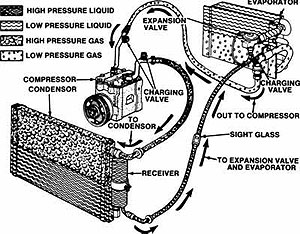Most of you that have had a chance to travel aboard Aeroplanes and some modern vehicles, or visited hot cities like Dar-es-salaam, Bujumbura or even Dubai, you may have encountered a cold phenomenon generated by electronic devices commonly known as AC (Air conditioner).


Most of you that have had a chance to travel aboard Aeroplanes and some modern vehicles, or visited hot cities like Dar-es-salaam, Bujumbura or even Dubai, you may have encountered a cold phenomenon generated by electronic devices commonly known as AC (Air conditioner).
These devices may be termed as "air coolers”, they are designed to keep the air temperatures controlled to predetermined levels. When the temperatures outside houses and vehicles get higher than the normal room temperature, many people will begin to feel uncomfortable such that many of them may seek the cool comfort of indoor air conditioning.
Like water towers and power lines, air conditioners are one of those things that are employed in everyday life to moderate these temperatures. It is very important to know how these essential equipments perform the magic they do.
In countries like Rwanda, where the maximum temperature rarely goes beyond 28 degrees centigrade, the services of air-conditioning may be at the minimum.
Air conditioners come in a range of sizes, cooling capacities and prices. The most common type was the window air conditioner, an easy and economical way to cool a small area.
This is installed in a window like opening, with one side facing the outside and the other the inside. The same unit extract the heat from inside and looses it out side.
This is a robust unit that is very easy to install.
In a number of instances, the window AC is not practical and hence the installation of the split unit. This is where there are two units, one for the indoor and the other being an outdoor unit; the two could be as far apart as 20metres or so.
At times, you will encounter condensers installed on the ground or on building canopies or even the roof; these are directly connected to the AC indoor units and act as their ventilators or hear extractors. As for cars and other forms of vehicles, they too have radiators that are sometimes known as evaporators, these serve as heat dispensers.
It does not matter much, even though each of these machines has a pretty distinct look, they all work on the same principles.
It is assumed that, the air conditioners lower the temperature in their surroundings simply by pumping cool air in. Far from it, what’s actually happens is the warm air from your house is being removed, cooled and cycled back in as cooler air.
This cycle continues until the thermostat (temperature switch) reaches the desired temperature. An air conditioner is essentially a refrigerator without the insulated box.
It uses the evaporation of a refrigerant, like Freon, to provide cooling. The technicalities of the Freon vaporation cycle are the same in a refrigerator as in an air conditioner.
That is how the evaporation cycle in an air conditioner works. The compressor compresses cool Freon gas, causing it to become hot, high-pressure Freon gas.
This hot gas runs through a set of coils so it can disperse its heat, and it condenses into a liquid. Then Freon liquid runs through an expansion valve, and in the process it evaporates to become cold, low-pressure Freon gas; this cold gas runs through a set of coils that allow the gas to absorb the surrounding heat and cool down the air inside the building.
Mixed in with the Freon is a small amount of lightweight oil. This oil lubricates the compressor so that it keeps running smoothly and to remove friction that could cause heat instead of the desired cool air.
Air conditioners help clean your car or home’s air as well. Most indoor units have filters that catch dust, pollen, mould spores and other foreign substances as well as smoke and everyday dirt found in the air.
Most air conditioners also function as dehumidifiers because they take excess water vapour from the air and use it to help cool the unit before getting rid of the water through a hose to the outside.
Other units use the condensed
moisture to improve efficiency by routing the cooled water back into the system to be reused.
So this is the general concept involved in air conditioning. In the next section, we’ll take a look at window and split-system units.


